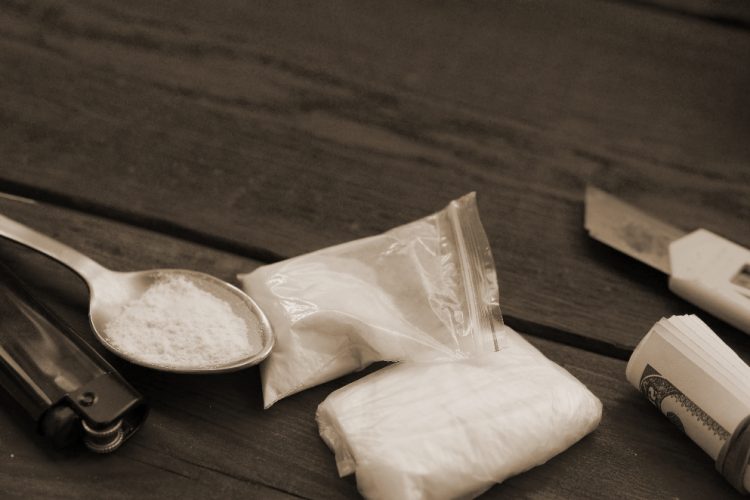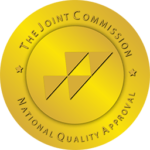The term “8 ball of coke” is more than just a street name or slang term; it’s a unit of measurement in the illicit drug trade, representing approximately 3.5 grams of cocaine or one-eighth of an ounce of cocaine. This stimulant, derived from the coca plant, has been at the center of social, legal, and health discussions for decades. In fact, the National Institute on Drug Abuse states, “Drug overdose deaths involving cocaine rose steadily from 6,784 in 2015 to 15,883 in 2019. From 2019 to 2021, cocaine-involved deaths rose nearly 54% to 24,486 deaths.” With the increased amounts of deaths and overdoses, it’s more important than ever to understand the complexities and dangers of cocaine and cocaine abuse.
Understanding 8 Ball Cocaine
Origins of the Term “8 Ball”
The term “8 ball” has its roots in the English measurement system, specifically referring to one-eighth of an ounce. This term is not exclusive to cocaine and can be used to describe the quantity of any substance in this specific weight. Understanding this term is essential for grasping the extent of drug culture and its vernacular, which often uses such coded language to operate under the radar of law enforcement and the uninitiated.
What Does an 8 Ball of Cocaine Look Like?
An “8 ball” of cocaine is typically a small, compact quantity of the drug that weighs approximately 3.5 grams. Physically, it can vary in appearance due to the purity and the way it is processed. Pure cocaine is a fine, white powder, but the appearance can differ based on the substances it is cut with, which may include baking soda, talcum powder, or other adulterants to increase volume. An 8 ball of cocaine might be packaged in small, tight wraps or baggies, designed to be discreet and easy to transport. The powder itself might look slightly off-white or have a slight shine, depending on its purity and the additives mixed with it.
What Is the Chemical Composition of an 8 Ball of Cocaine?
The primary chemical in an “8 ball” of cocaine is cocaine hydrochloride, a highly addictive stimulant drug derived from the leaves of the coca plant. The purity of an 8 ball can significantly vary, with the cocaine hydrochloride often being cut or mixed with other substances to increase its volume for sale. Common cutting agents include lactose, mannitol, and in some cases, more dangerous substances like fentanyl, which can significantly increase the risk of overdose. The exact chemical composition of an 8 ball of cocaine can be unpredictable due to these additives, making each batch potentially different in terms of effects and risks.
What Are the Side Effects of an 8 Ball of Cocaine?
The side effects of using an “8 ball” of cocaine can range from short-term euphoria and increased energy to severe health risks. Initially, users may experience heightened alertness, dilated pupils, reduced appetite, and an intense feeling of happiness or euphoria. However, these short-term effects are quickly overshadowed by the potential for negative consequences, which include:
- Cardiovascular Problems: Increased heart rate and blood pressure can lead to heart attacks, strokes, and cardiac arrest.
- Neurological Effects: Users may experience tremors, seizures, and headaches. Long-term use can lead to changes in brain structure and function, affecting memory, attention, and decision-making.
- Psychological Issues: Paranoia, anxiety, panic attacks, and hallucinations can occur, especially with high doses or prolonged use. Cocaine use disorders and addiction are significant risks, leading to a cycle of dependency and withdrawal.
- Physical Health Risks: Nasal damage from snorting, lung damage from smoking, and infectious diseases from injecting are among the physical health risks associated with different methods of cocaine use.
The Science Behind Cocaine
How Cocaine Affects the Brain
Cocaine’s addictive potential is primarily due to its action on the brain’s reward system. It increases levels of dopamine, a neurotransmitter associated with pleasure and movement, by preventing the reabsorption of this chemical into the brain cells. This buildup of dopamine contributes to the intense euphoria experienced by users, making the drug highly addictive.
Long-Term Effects of Cocaine on Health
Long-term cocaine use can lead to profound changes in the brain and body. Users may develop a tolerance, necessitating a higher amount of cocaine to achieve the same high, which in turn increases the risk of overdose. Chronic use can lead to mood disorders, cognitive impairments, and severe physical health issues, including irreversible damage to the heart and brain.
Legal Ramifications
Laws Against Cocaine Use
Cocaine is classified as a Schedule II drug in the United States, indicating a high potential for abuse and limited medical use. This classification means that possession, distribution, and production are met with severe legal penalties, reflecting the drug’s danger to individuals and society.
Penalties for Possession
The penalties for possessing cocaine, including an “8 ball,” can be severe and life-altering. They may include imprisonment, substantial fines, and a criminal record that can hinder employment opportunities, educational prospects, and personal relationships. These legal consequences aim to deter use and penalize those involved in the cocaine trade.
Alternatives and Solutions
Treatment Options
Despite the challenges, there is hope for individuals struggling with cocaine addiction. Treatment options range from medical interventions, such as medication-assisted treatment, to behavioral therapies that address the underlying causes of addiction. Tailoring treatment to the individual’s needs is crucial for effectiveness.
Rehabilitation Programs
Rehabilitation programs offer comprehensive support for recovery, including detoxification services, individual and group therapy, and relapse prevention education. These programs are designed to help individuals rebuild their lives and maintain long-term sobriety.
Support Groups
Support groups provide a community of individuals who understand the challenges of addiction. These groups offer emotional support, share success stories, and provide a network of peers committed to recovery. Participation in support groups is often a key component of the recovery process, offering hope and encouragement to those in need.
Recover From Cocaine Addiction
The journey through understanding, confronting, and overcoming the challenges posed by “8 ball of coke” addiction is complex and fraught with obstacles. However, through increased awareness, comprehensive treatment programs and options, and supportive communities, individuals can find the path to recovery and a life free from addiction. Addressing the broader societal impacts requires a concerted effort from all sectors of society to reduce demand, offer support, and provide education on the dangers of cocaine use.
If you or a loved one are struggling with cocaine addiction or drug abuse, get in touch with True Self Recovery. Our treatment center is dedicated to providing individuals with a safe, supportive environment to overcome substance abuse.
FAQs
Why is cocaine considered addictive?
Cocaine is addictive because it increases dopamine levels in the brain, leading to intense euphoria that users seek to replicate, often leading to addiction.
Are there effective addiction treatments for cocaine?
Yes, there are multiple effective treatments, including medical interventions, behavioral therapies, rehabilitation programs, and support groups for individuals struggling with drug use.
What is the Street Price of an 8 Ball of Cocaine?
8 ball of cocaine cost varies significantly by region, ranging from $100 to $250 or more in the United States. Prices are influenced by factors like geographic location, purity, and demand.
Where Does Cocaine Come From?
Cocaine comes from the coca plant (Erythroxylum coca), native to South America, particularly in Peru, Bolivia, and Colombia. The production process involves several steps that convert coca leaves into the powdered form of cocaine, with Colombia being the largest producer.



